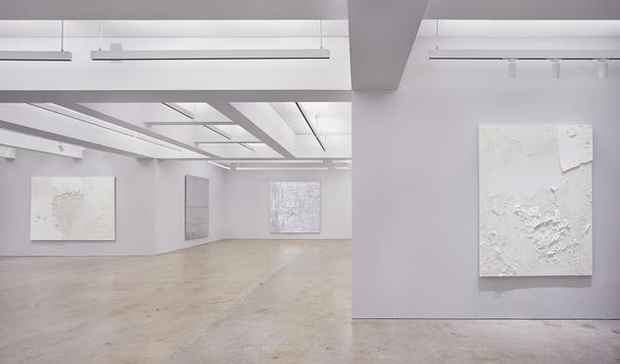Rudolf Stingel “2000-2003”
Nahmad Contemporary

This event has ended.
Nahmad Contemporary announces Rudolf Stingel: 2000-2003, featuring works from the pivotal Styrofoam and Celotex series. In the last quarter century, Italian-born Rudolf Stingel has emerged as one of the most radical artists of his time. Upon relocating to New York in 1987, he came to prominence during a decade when painting was famously declared dead. Despite the prevailing narrative of the time, Stingel never abandoned painting and instead dedicated his practice to probing the fundamental questions, possibilities, and limitations of the medium time and again, while simultaneously redefining the position of the viewer before a painting’s surface. His Styrofoam and Celotex series, which are the outcome of several major installations at the François Pinault Foundation, the Museum of Contemporary Art, Chicago, the Whitney Museum of American Art, and the 2003 Venice Biennale, are arguably two of the artist’s most significant and daring bodies of work within his extraordinarily rich oeuvre. This exhibition presents a selection works rarely seen together, exploring the grittier underbelly of Stingel’s multi-faceted artistic output.
In the Styrofoam paintings, Stingel walks across panels of white Styrofoam laid on the floor wearing boots drenched in acid varnish or adheres fragments of the material to canvases covered in silicon. The subsequent chemical reaction eats away at the Styrofoam resulting in tracks of footprints and suspended glacial masses. By means of these alchemical processes, the painting’s surface transforms into a site of destruction and decay, with only its remnants evidencing the performative action that produced the work. Many of the conventions associated with traditional painting – from materiality, surface, authenticity, to mark-making – are destabilized in these works, in turn opening up new ways of thinking about the medium. The use of a cheap industrial material evokes the ethos of the Arte Povera movement, and its predecessors such as Piero Manzoni, who also utilized Styrofoam. Though these pictures are ultimately hung vertically on the wall, the footprints and imprints affirm an essentially horizontal orientation, akin to Robert Rauschenberg’s flatbed picture plane or Jackson Pollock’s drip paintings. Yet, in Stingel’s work, the heroic gesture of the artist’s hand is dissolved down to a mundane act, stepping outside of the painterly realm into the literal world.
Stingel pushes the technique of using destructive forces as a catalyst for creation even further in the Celotex works, in which the interior of a space is entirely covered with aluminum insulation paneling known as Celotex Tuff-R. Over the course of an exhibition, viewers enter the all-over reflective space and are given free reign to etch their names, thoughts, and doodles onto the construction material, transforming the pristine silver surface into yet another locus of destruction. The vandalistic aspect calls to mind the slashed canvases of Lucio Fontana, the gouged surfaces of Jean Dubuffet’s paintings, and the graffiti elements embedded in Cy Twombly’s work. By transferring the task of mark-making to the public, however, Stingel again dispels the aura of the artist’s hand heralded by Abstract Expressionism.
Media
Schedule
from November 06, 2015 to January 23, 2016